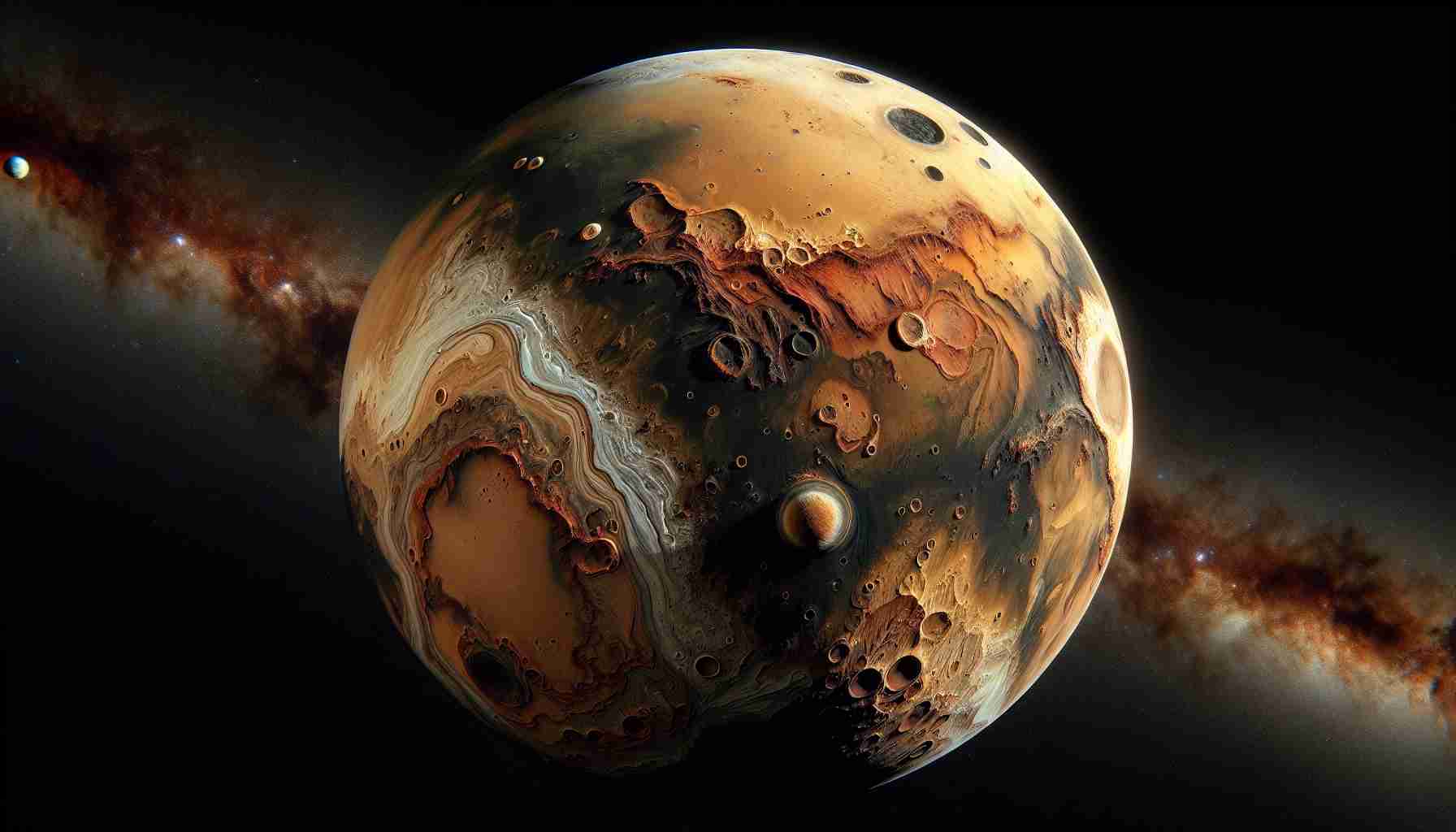In a groundbreaking development for planetary science, significant discoveries have emerged concerning Mars and Jupiter’s moon, Io. These revelations from NASA mark an exciting chapter in our understanding of the solar system.
Scientists have solved a long-standing enigma surrounding Io, which was first highlighted during the Voyager missions in 1979. As the most volcanically active known body in the solar system, Io’s surface features have puzzled researchers for decades. NASA’s Juno spacecraft, which has been orbiting Jupiter since 2016, has clarified that Io lacks a subsurface ocean of magma as previously speculated. Instead, its numerous active volcanoes are powered by multiple smaller magma chambers beneath its crust.
This revelation came after Juno’s close flybys, during which sophisticated radio techniques allowed scientists to meticulously chart Io’s gravity field. The observations showed that any significant subsurface magma layer would have led to more noticeable deformation, but they found otherwise.
In a twist, the Juno team discovered intriguing new features on Io’s surface. One vast lava lake known as Loki was found to contain at least 20 small islands, raising questions about their formation amidst the intense volcanic activity of the region.
Meanwhile, the Perseverance rover on Mars has reached an exciting geological boundary at Jezero Crater, opening a portal to ancient rocks possibly dating back over 4 billion years. This transition promises to deepen our understanding of the early solar system’s formation, with all instruments aboard the rover functioning optimally and ready to collect data.
New Discoveries on Io and Mars: Unlocking Solar System Mysteries
Recent findings from NASA’s exploration missions have unveiled critical insights about Mars and Jupiter’s moon, Io, transforming our comprehension of these celestial bodies.
Understanding Io’s Volcanic Activity
Io, recognized as the most volcanically active body in our solar system, has perplexed scientists since the Voyager missions in 1979. The latest data from NASA’s Juno spacecraft indicates that Io is not supported by a subsurface ocean of magma, a theory proposed for years. Instead, researchers have discovered that Io’s surface volcanoes are energized by multiple smaller magma chambers situated beneath its crust. This groundbreaking understanding arose from Juno’s close flybys, which employed advanced radio techniques to construct a detailed gravity map of Io.
Key Features of Io:
– Volcanic Activity: Io exhibits profound and consistent volcanic activity, with over 400 active volcanoes identified.
– Surface Characteristics: The discovery of 20 small islands within Loki, a vast lava lake, poses intriguing questions about geological processes in such a drastically active environment.
– Gravity Measurements: Juno’s precise measurements challenged long-held assumptions about the moon’s internal structure, shifting the focus to smaller magma reservoirs.
Mars Perseverance Rover’s Major Milestone
On a different front, NASA’s Perseverance rover is making strides in Martian geology. Having recently reached a significant geological boundary at Jezero Crater, the rover contemplates the study of ancient rock formations that might be over 4 billion years old. This transition site is valuable for interpreting the conditions that existed early in the solar system’s history.
Highlights from Mars Exploration:
– Instrument Functionality: All scientific instruments aboard the Perseverance rover are operating efficiently, poised for extensive data collection.
– Geological Significance: The ancient rocks could yield vital information regarding the formation and evolution of both Mars and Earth.
– Mission Goals: Investigations at Jezero Crater aim to ascertain signs of past life and study the planet’s climate and geology.
Trends and Innovations
As technology improves, our approach to planetary exploration continues to evolve. NASA’s deep-space missions, utilizing advanced instrumentation like the Juno and Perseverance frameworks, are pivotal in enhancing our understanding of planetary processes. The use of innovative methods, such as gravity mapping and high-resolution imaging, has become instrumental in solving longstanding cosmic puzzles.
Conclusion
These recent discoveries not only enhance our knowledge of Io and Mars but also set the stage for future explorations within our solar system. Continuous advancements in space technology will likely bring further revelations, enlightening our quest to understand the cosmos.
For more information on NASA’s missions and related insights, visit NASA.
